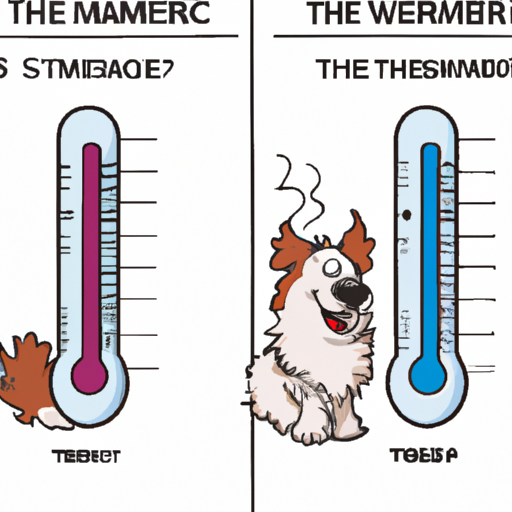Introduction
You’re a loving caregiver, always on your toes to ensure the comfort and safety of your furry friend. But one question that often leaves you puzzled is: “What temperature is too hot or too cold for my dog to be outside?” This guide will help you understand more about how temperature affects dogs and the precautions you can take to ensure their well-being.
Understanding Your Dog’s Tolerance to Temperature
Just as humans, dogs also have their comfort zone when it comes to temperature. However, this can vary considerably due to factors like:
- Breed: Some breeds are built for the cold, like Siberian Huskies, while others like Chihuahuas are more comfortable in warmer climates.
- Size and Body Fat: Larger dogs with more body fat tend to tolerate colder temperatures better than smaller, leaner dogs.
- Age and Health: Senior dogs or dogs with health conditions may struggle in extreme temperatures.
Here’s a simple table to give you a general idea:
| Dog Type | Comfortable Temperature Range |
|---|---|
| Small, thin dogs | 20°F – 90°F |
| Large, fat dogs | 0°F – 100°F |
| Medium, healthy dogs | 15°F – 95°F |
Protecting Your Dog in Cold Weather
When the temperature starts to drop, you need to be extra vigilant about your dog’s comfort and health.
- Limit Outdoor Time: Keep walks short and consider indoor games if it’s too cold.
- Invest in Dog Clothing: Sweaters and boots can provide extra warmth for your dog.
- Keep Them Hydrated: Dogs can get dehydrated in cold weather too.
Keeping Your Dog Cool in Hot Weather
As much as dogs love basking in the sun, high temperatures can be dangerous for them.
- Provide Shade and Water: Always ensure your dog has access to a shaded area and plenty of fresh water.
- Avoid Peak Heat Hours: Try to walk your dog in the cooler parts of the day, like early morning or late evening.
- Protect Their Paws: Hot pavement can burn your dog’s paws. Consider dog booties for protection.
Monitoring Your Dog for Signs of Discomfort
Regardless of the temperature, the best way to ensure your dog’s well-being is by observing their behavior. Signs of discomfort include excessive panting, shivering, lethargy, and changes in appetite or behavior.
Frequently Asked Questions (FAQ)
Q1: Are there specific breeds that are more resistant to cold?
Yes, breeds like Siberian Huskies, Alaskan Malamutes, and Saint Bernards are more resistant to cold.
Q2: How can I tell if my dog is too hot?
Excessive panting, drooling, and lethargy are common signs of heat exhaustion in dogs.
Q3: Is it safe for my dog to eat snow?
Eating snow isn’t generally harmful, but it could potentially contain pollutants or toxins. It’s safer to provide fresh water.
Remember, when it comes to your dog’s comfort and health, you know them best. Always trust your instincts and don’t hesitate to consult a vet if you’re unsure.



